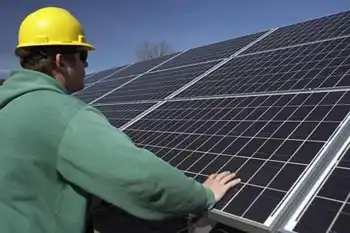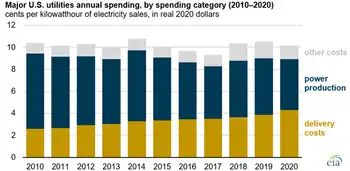Study assesses risk and hazards in older homes
The study also shows that the vast majority of potentially hazardous electrical conditions identified are a result of a failure to meet well recognized, proven safety code provisions and failure to properly install or maintain electrical equipment.
The first-of-its-kind study closely examined electrical systems and devices from 30 older homes in 10 states across the United States. The majority of homes in the study ranged in age from 25 years to more than 90 years. Two of the homes were more than 100 years old. This is the first such study to look within and "behind the walls" of older homes and assess the electrical risks and hazards present. Previous studies have shown the frequency of fires in home residential electrical systems has been disproportionately high in homes more than 40 years old.
"Electricity is one of the leading causes of home fires in the United States," said Jack Wells, Chair of the FoundationÂ’s Technical Advisory Committee that has been working on the study. "Every day we put more and more of a burden on the electrical systems in our homes. Because of poor installation or maintenance, some older homes just are not capable of handling that burden. We hope this study will show homeowners the importance of having older homes inspected and, if needed, repaired by qualified electricians."
The Fire Protection Research FoundationÂ’s study examined each homeÂ’s wiring and electrical systems, along with specific devices. After examining the homes, key electrical system elements (receptacles, service entrance panels, lighting fixtures, junction boxes, etc.) were collected and sent to Underwriters Laboratories (UL) where detailed laboratory analyses were conducted. These analyses examined how the elements performed after years of service in the field.
The findings of the study included:
· Some older equipment and wiring appeared well-maintained, performing effectively and safely, but other older homes had dangerous electrical conditions.
· Some older "knob-and-tube" and rubber insulated wiring failed testing that was conducted with high voltage levels, especially after being subject to bending.
· Service panels in most of the homes surveyed had one or more significant safety problems due to aging, improper installation, or misuse.
· Circuit breakers that were not properly installed in boxes for their intended application (e.g. outdoors) showed signs of corrosion, insect infestation, or other potentially serious problems.
· Some of the electrical receptacles examined in the lab failed an important test which measured how hot the receptacle may get under certain conditions.
· Lighting fixtures in several houses showed evidence of potentially dangerous conditions including: improper installation; frayed or damaged wire insulation; improperly grounded boxes; and use of improper wiring and bulbs.
· A large percentage of older homes had improperly installed or maintained wire splices and junction or outlet boxes.
· A small but significant number of ground fault circuit interrupters (GFCI) did not test and function properly. Most of those that did not function had been installed improperly.
· Many of the homes had potentially dangerous electrical conditions that did not comply with the current safety provisions of the National Electrical Code (NEC). In addition, many of the problems identified in this study did not comply with the NEC that was in effect at the time the homes were built or remodeled.
The study reveals that the vast majority of potentially hazardous electrical conditions in these older homes were caused by not only the failure to meet well recognized, proven safety code provisions found in the NEC, but by the failure to properly install and maintain important electrical equipment. In many of the homes, the problems were directly related to the poor quality of electrical system retrofits or changes made after the homes were originally constructed.
"Homeowners can take simple steps to protect their homes and their families from electrical hazards," said Wells. "Have your home inspected by a qualified electrician who is looking specifically at the electrical system. Always use a professional electrician when you have electrical work completed and make certain the work complies with proven safety code provisions."
Based on the study, the Foundation also recommends that communities ensure all electrical work done in homes meets the safety provisions in the current edition of the NEC. That code has been developed over time to provide the highest level of safety through practical, proven safety provisions.
Related News

Ontario's electricity operator kept quiet about phantom demand that cost customers millions
TORONTO - For almost a year, the operator of Ontario’s electricity system erroneously counted enough phantom demand to power a small city, causing prices to spike and hundreds of millions of dollars in extra charges to consumers, according to the provincial energy regulator.
The Independent Electricity System Operator (IESO) also failed to tell anyone about the error once it noticed and fixed it.
The error likely added between $450 million and $560 million to hourly rates and other charges before it was fixed in April 2017, according to a report released this month by the Ontario Energy Board’s Market Surveillance Panel.
It did…




